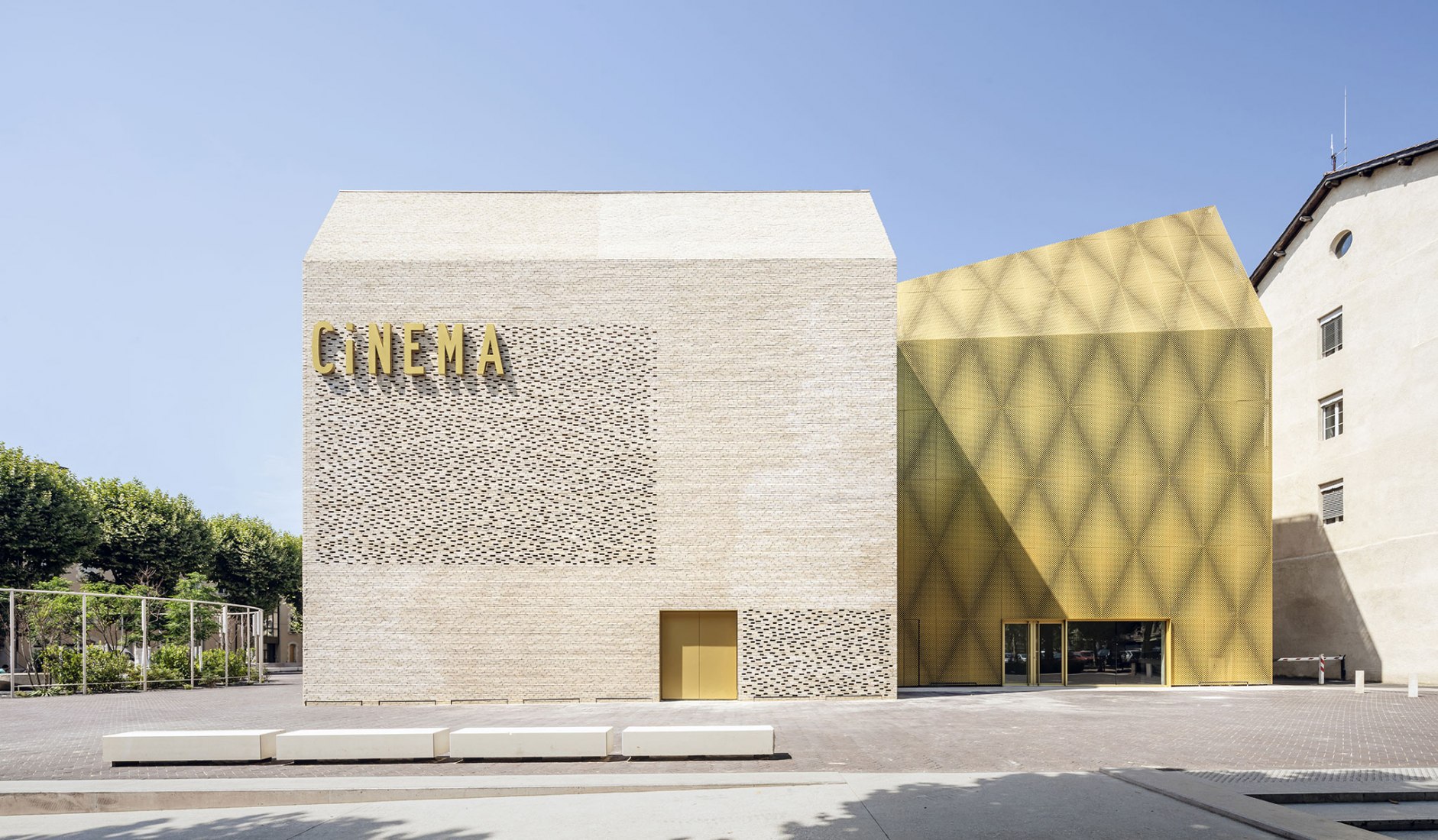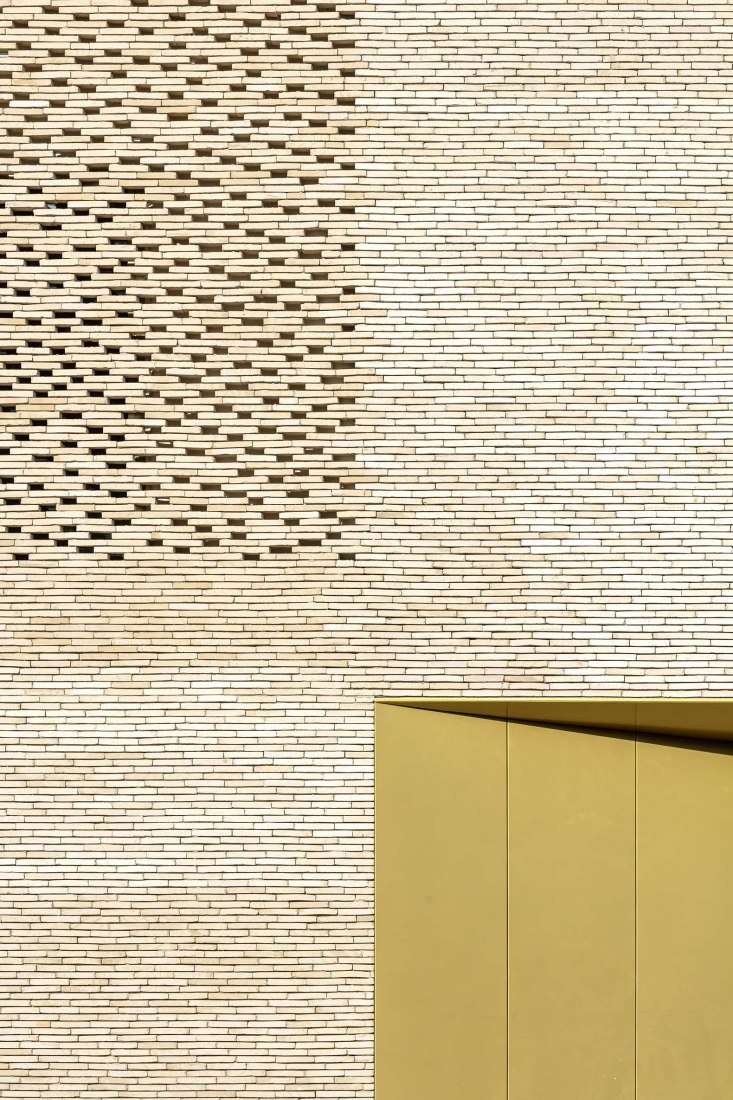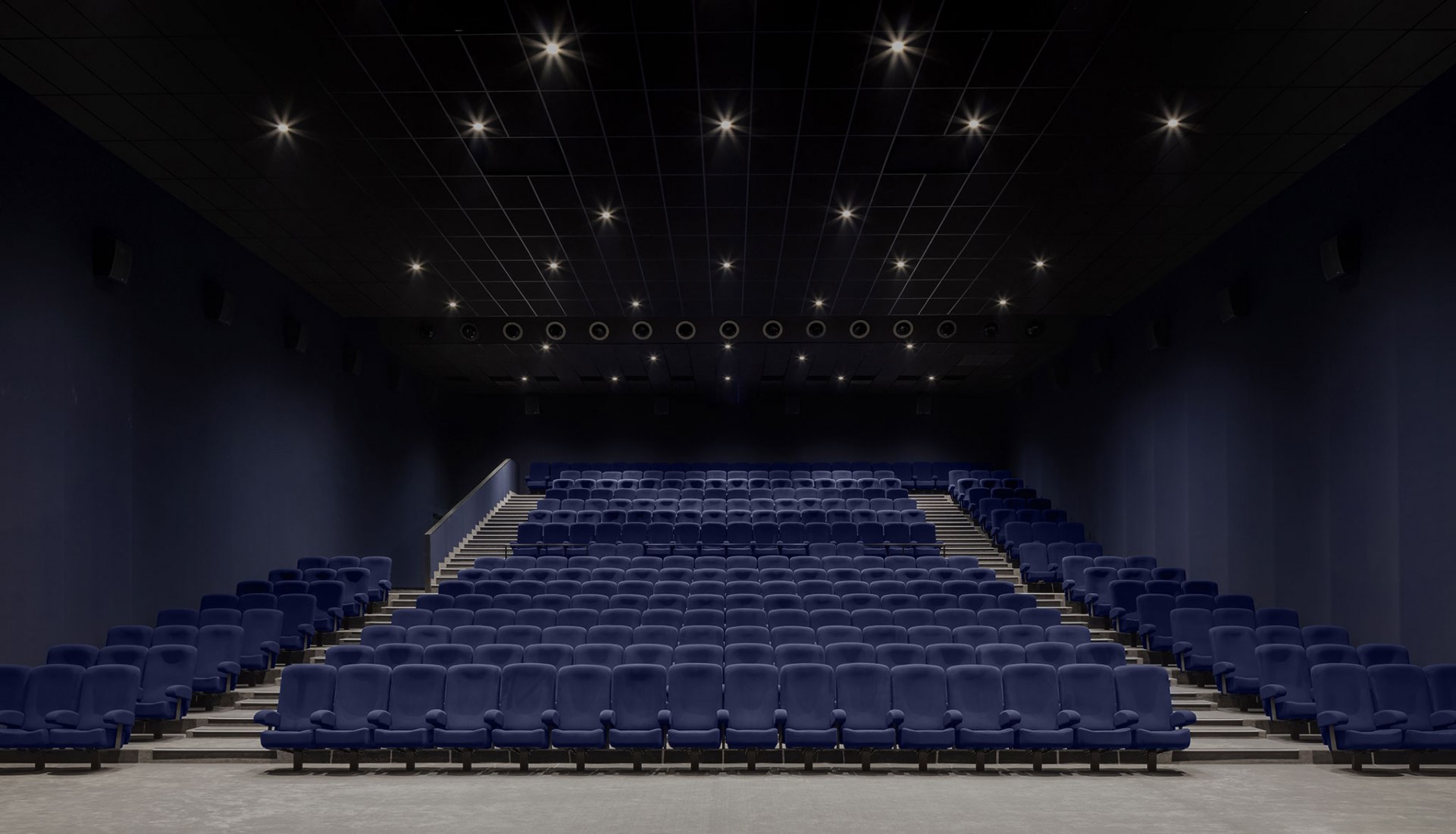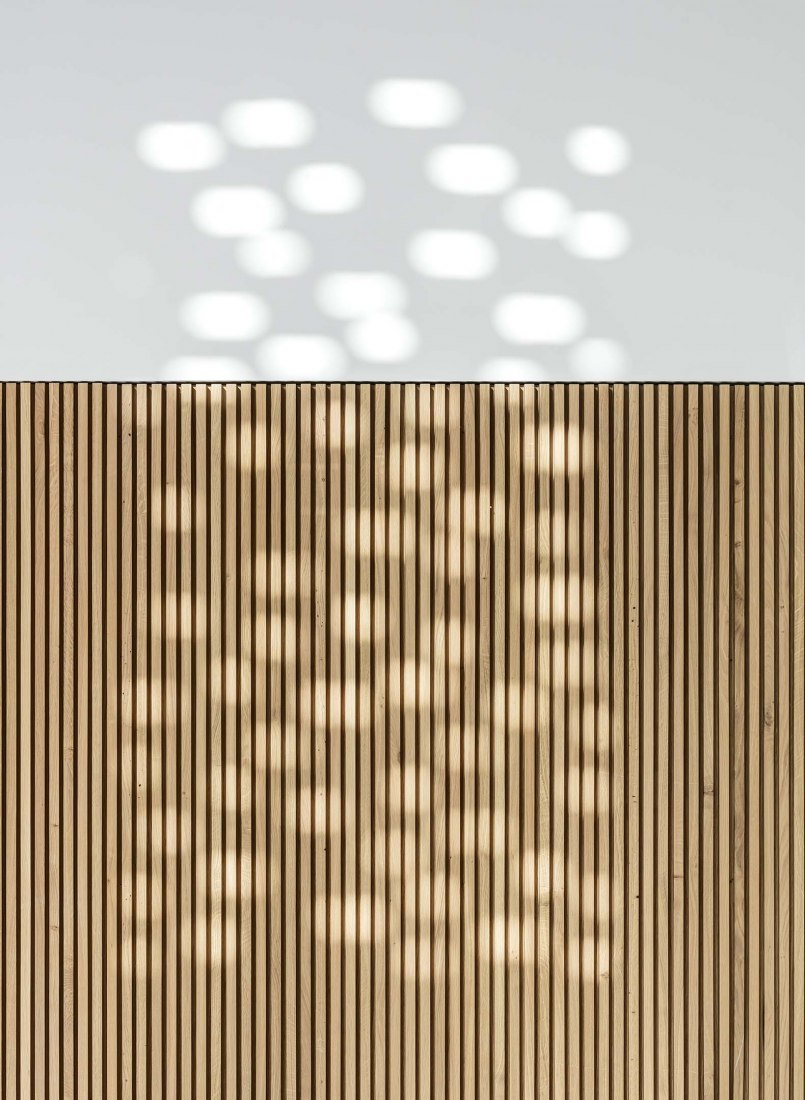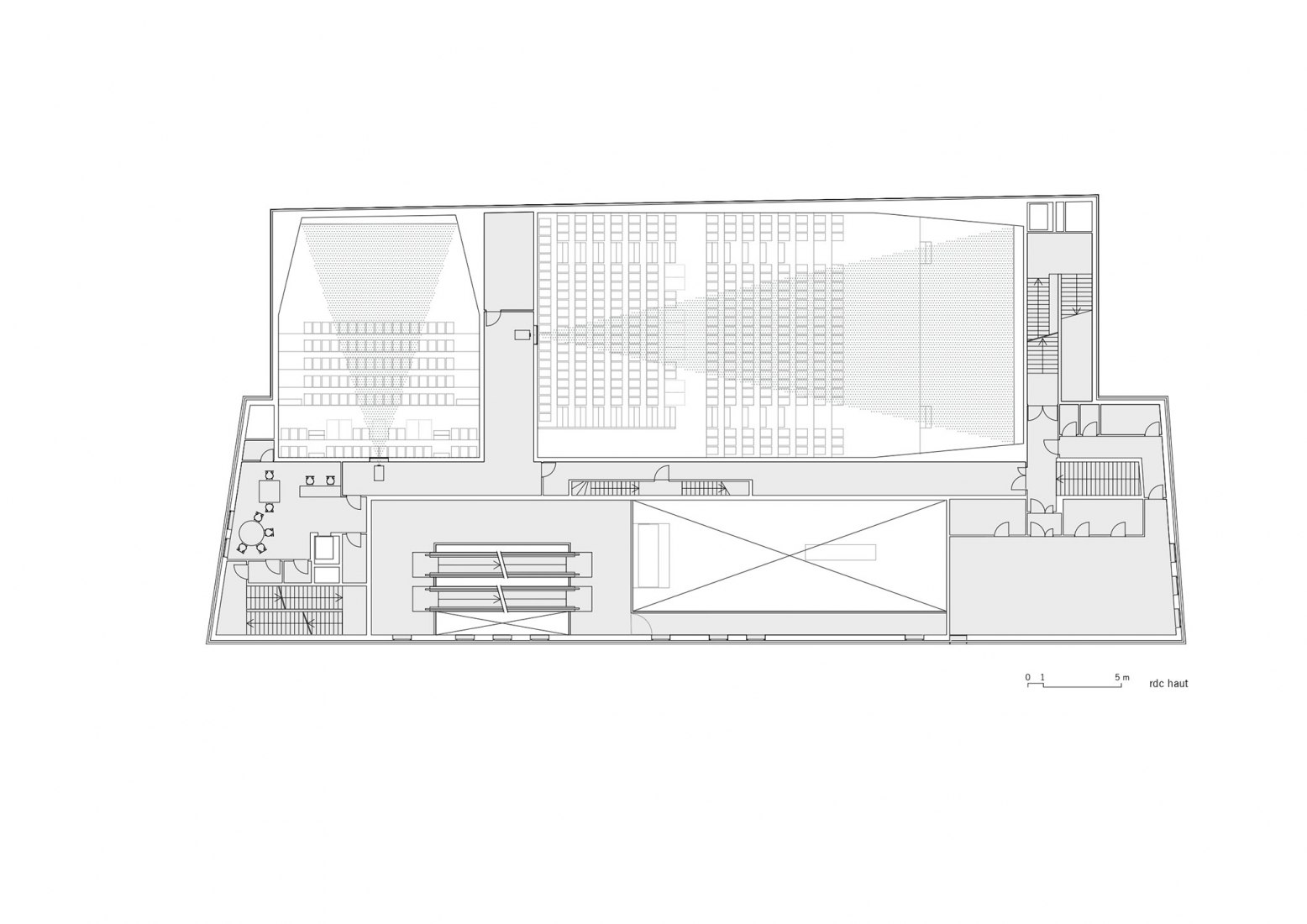The project program, understood as a resting place located in the center of the square, consists of 7 spacious rooms with a maximum capacity of 1051 people where the treatment of the material in the exterior cladding as in the interior cladding will be crucial in the concept of the same.
Description of project by Antonio Virga
The cinema "Grand Palais" in Cahors
The architect Antonio Virga creates a 7-screen cinema, with a maximum capacity of 1051 people, integrated into a comprehensive development plan for a pedestrianized square in the historic center of Cahors. The place, generally mineral, presents, in the center, a very dense green space, called the "oasis". On the last level of the building, with a separate entrance from the cinema, there is a space where the Resistance Museum is located (which previously occupied a building in the square that was demolished before the work).
The site
The cinema is located north of the historic heart of the city of Cahors, a few steps from the banks of the Lot. Occupying a former military site (now Place Bessières), the project allowed to recreate and reinterpret the symmetry of the pre-existing military barracks, which occupies the site of the east wing of the complex, destroyed in a fire in 1943. Place Bessières, previously used as a car park, It has been transformed into a Generous space for pedestrians, protected by an existing wooded mass, adapted to the project. The square is delimited on the west side by a police station, by a multifunctional building (Espace Clément Marot) on the north side, by a sports complex on the northeast corner and by the new cinema on the east. The square opens to the south on Place Charles de Gaulle and towards the historic center.
The project
In the tradition of the great military complexes and public facilities of the 19th century, the buildings and the exterior spaces that accompany them are organized in a rigorous and harmonious logic of distribution and devastation. In order to restore the places to their historical scale, all the spaces are treated with simplicity and a great unity of materials, furniture and plants.
The project's alignment game follows a strict logic: the two pre-existing buildings of the barracks are landmarks. In search of a strong contemporary aesthetic, cinematographic architecture aims to go beyond the objectives of reconstituting the morphology of the old barracks, requested by the client. The frame is divided into two distinct volumes, methodically created and then visually affirmed: one in brick and the other in perforated gilt metal, each playing a specific role in relation to the public space.
The brick volume, mirror of the two buildings of the old barracks, is imagined as a contemporary and identifiable reinterpretation of the existing ones. This is the most notable element of the square, due to the direct connection it offers with the history of the city. The choice of brick is motivated by the desire to touch the collective Cadurcian memory, avoiding any pastiche.
The size of this volume and its presence are reinforced by the unique character of the cladding of the facades and the roof. Revealing imposing and strong facades, this monolithic volume is illuminated on the floors by a “moucharabieh” made up of small perforations that allows to add lightness to the facade and create a more distant appeal in its surroundings. This alternation of full and empty follows a functional logic. The perforated skin allows the interior spaces to come to life during the day, with play of light and shadow, and at night, the façade gives rise to small flashes of light. The program continues in the golden volume, imagined as an extension of brick volume. The visual contrast with the brick gives the impression of a second building leaning on the first. The chromatic harmony between light brick and gold metal recalls the nuances of the historic center of Cahors. In keeping with the architectural history of the city, this metallic volume has a sloping roof over the pediment in front.
The new cinema acquires an aesthetic faithful to the Lot territory through the use of brick as a material covering both the facade and the roof. The use of a natural clay brick seemed necessary to us to guarantee the authenticity and sustainability of the result. Brick, which is often found in Cahors architecture, like the Tower of Pope John XXII located a few meters from the site, thus becomes the link with the history of Cadur, it is a new link with the city. This material reflects a qualitative image through the natural roughness it presents.















